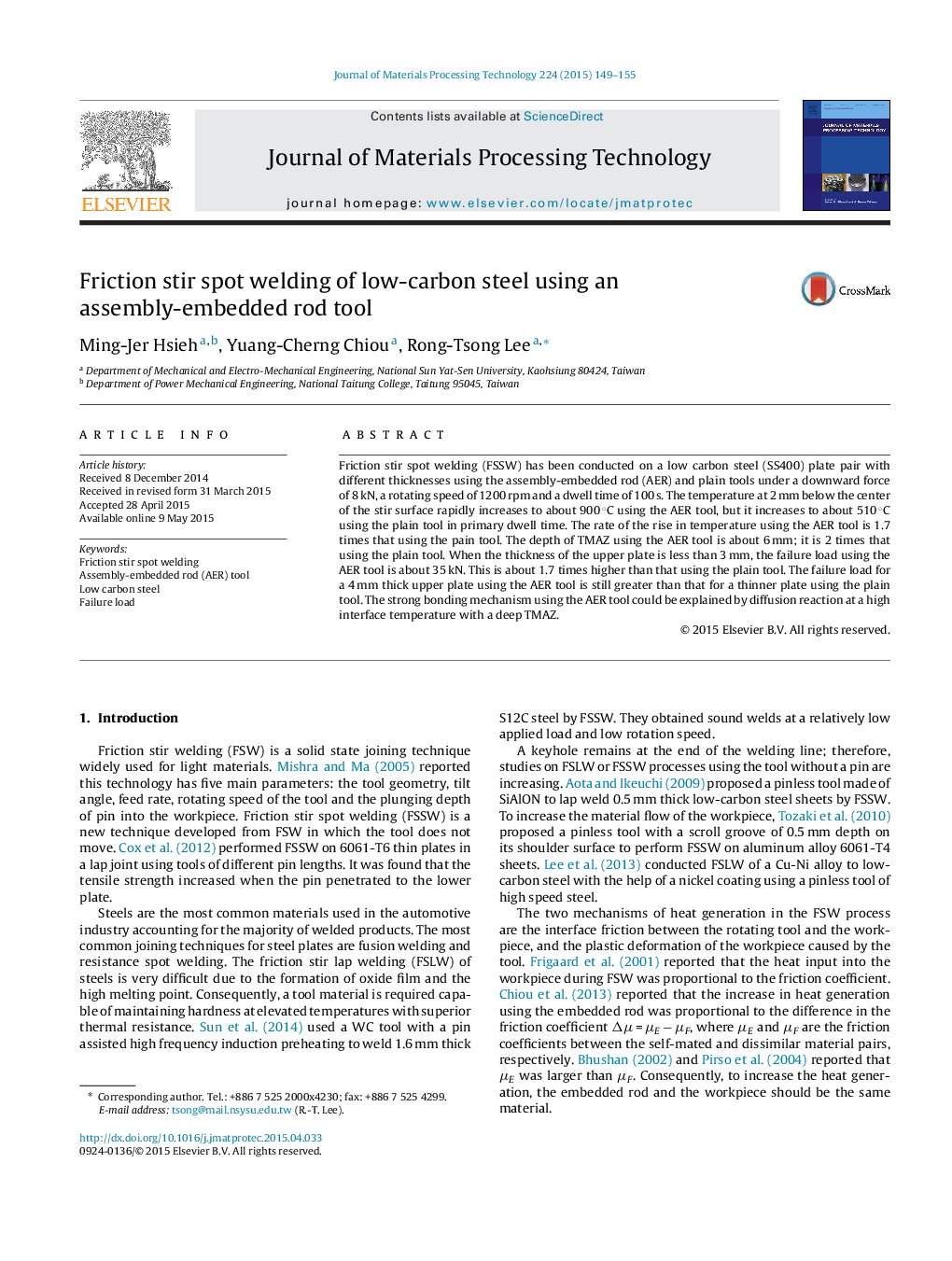| Article ID | Journal | Published Year | Pages | File Type |
|---|---|---|---|---|
| 7177028 | Journal of Materials Processing Technology | 2015 | 7 Pages |
Abstract
Friction stir spot welding (FSSW) has been conducted on a low carbon steel (SS400) plate pair with different thicknesses using the assembly-embedded rod (AER) and plain tools under a downward force of 8 kN, a rotating speed of 1200 rpm and a dwell time of 100 s. The temperature at 2 mm below the center of the stir surface rapidly increases to about 900 °C using the AER tool, but it increases to about 510 °C using the plain tool in primary dwell time. The rate of the rise in temperature using the AER tool is 1.7 times that using the pain tool. The depth of TMAZ using the AER tool is about 6 mm; it is 2 times that using the plain tool. When the thickness of the upper plate is less than 3 mm, the failure load using the AER tool is about 35 kN. This is about 1.7 times higher than that using the plain tool. The failure load for a 4 mm thick upper plate using the AER tool is still greater than that for a thinner plate using the plain tool. The strong bonding mechanism using the AER tool could be explained by diffusion reaction at a high interface temperature with a deep TMAZ.
Related Topics
Physical Sciences and Engineering
Engineering
Industrial and Manufacturing Engineering
Authors
Ming-Jer Hsieh, Yuang-Cherng Chiou, Rong-Tsong Lee,
